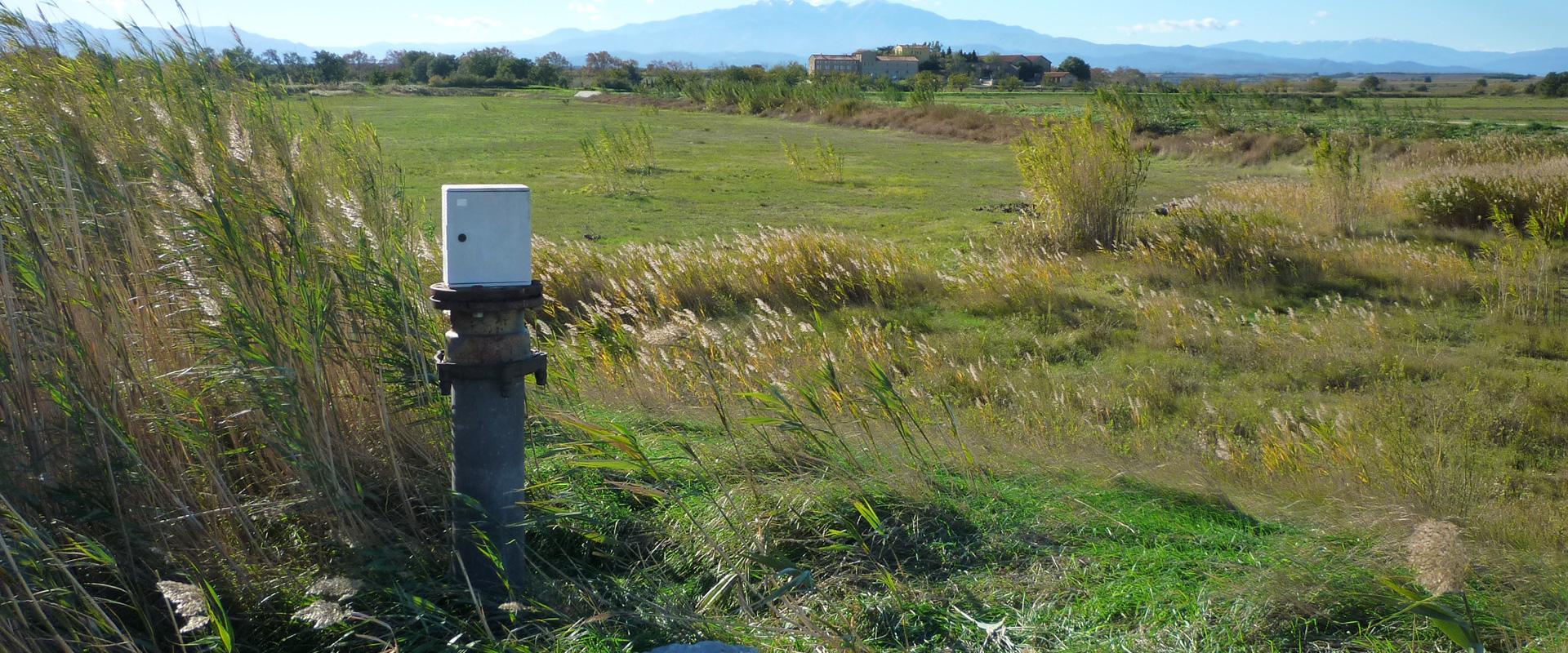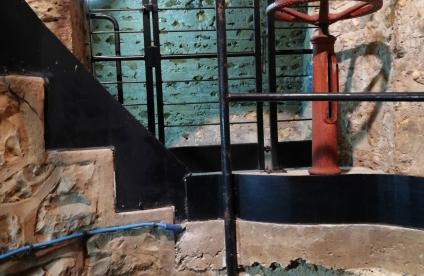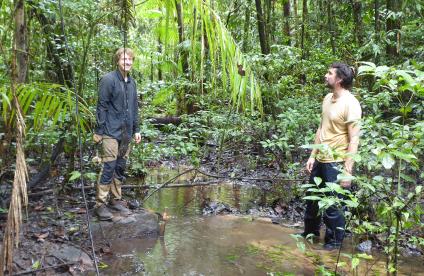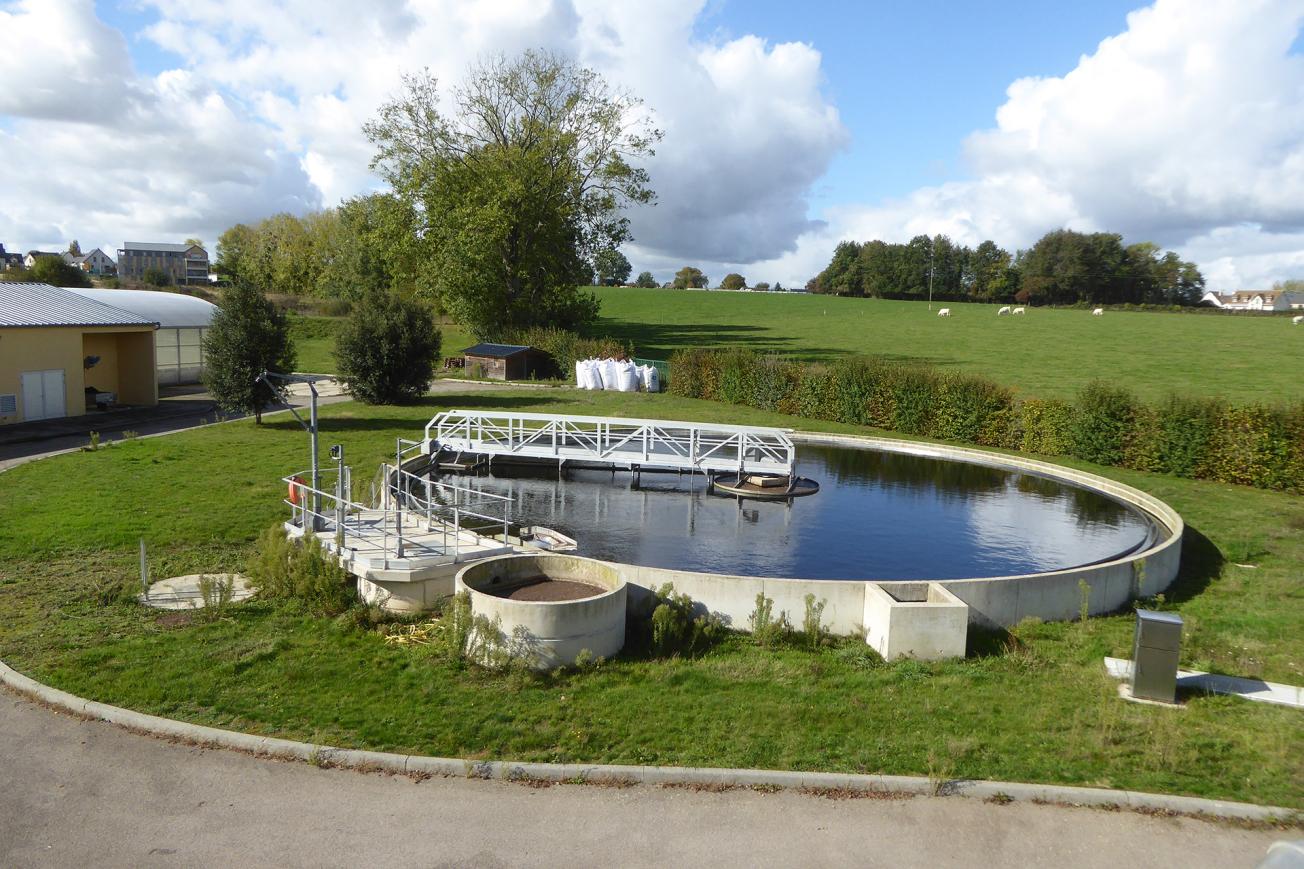
Wastewater treatment plant in Bourg-Achard in the Eure département (October 2020).
© BRGM
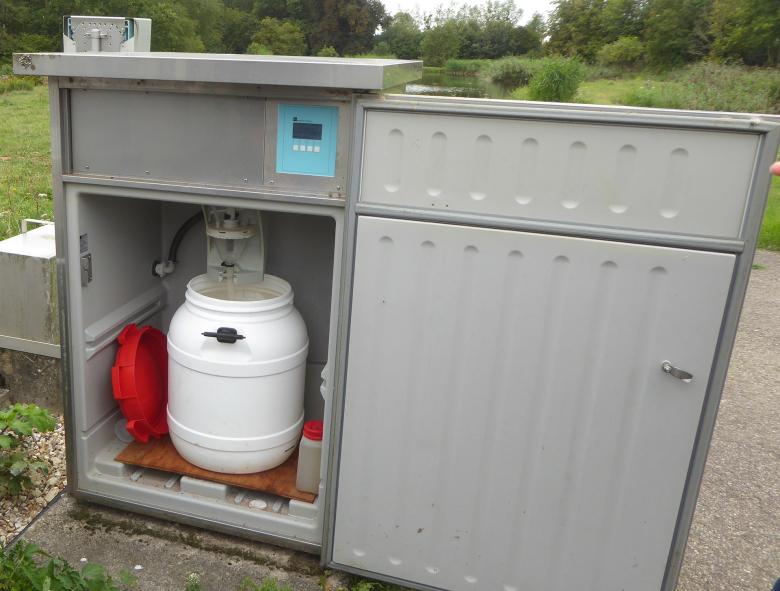
Automatic sampler linked to the flow rate that collects effluent from a wastewater treatment plant (Saint Ouen de Thouberville - October 2020).
© BRGM
The need
AMPA is often found in the raw water in the Varras water abstraction point (Mauny, Seine-Maritime), which draws water from a karstic chalk aquifer. There are at least two possible reasons for this contaminant being found in the water, since it is both a degradation product of glyphosate (a herbicide that can be used in agriculture and for certain local authority needs) and a by-product of certain detergents. Due to the hydrogeological environment, there are different ways that this compound could be transferred to groundwater in the drinking water abstraction point: diffuse infiltration linked to land use and/or more localised infiltration downstream of discharges from wastewater treatment plants. It is crucial for the Water Management Syndicate (SERPN) to understand the relative significance of each of these potential transfer routes in order to safeguard the quality of the water.
To achieve this goal, BRGM has implemented an original multi-tracer approach using chemical and isotopic tools, some of which are specific to wastewater, in addition to conducting surveys to improve knowledge of how the hydrogeological system functions in the catchment basin.
The results
The first results were obtained in the autumn/winter of 2020 during a low water period and just at the beginning of the recharge. They enabled us to establish an initial characterisation of the different possible sources of AMPA. The chemical and isotopic tools identified discharges from two wastewater treatment plants in the abstraction area as a possible source of contamination. A colour-tracing operation carried out downstream of these two discharges clearly showed a direct hydraulic relationship with the abstraction point, via swallow-holes identified during the field investigations, but also identified a more diffuse route via water loss zones highlighted during differential gauging analyses along a ditch. At the same time, the analysis of samples taken from various agricultural drains also confirmed the presence of AMPA in the water that infiltrates down into the water table and enabled us to estimate the initial flows. Investigations will continue during a full hydrological cycle to determine the main transfer route(s) and, if need be, to assess the variability of the relative contributions of the different transfer routes in various hydrodynamic contexts and during potential periods of glyphosate use.

We searched for the source of the pollution by making observations and analyses, but we did not know how to interpret the data. We contacted BRGM to draw on its expertise in transfer methods. They helped us to better identify the pollution sources that could impact water quality and determine the people or organisations we needed to contact as a matter of priority (businesses, individuals, local authorities or farmers) in order to improve water quality by reducing the transfer of pollutants.
Using the results
SERPN already manages several management and communication operations aimed at both the farming community and local authorities. In this case, identifying the transfer route(s) and their relative significance during a full hydrological cycle will provide concrete data to help target and prioritise the measures that need to be implemented in order to reduce contamination in the raw water at the abstraction point (communication and awareness-raising campaigns among users, improvements downstream of the wastewater treatment plants, green hydraulic filtering systems, etc.). This will increase the effectiveness of awareness-raising initiatives and help protect water resources.
The partners
- SERPN (Syndicat d'Eau du Roumois et du Plateau du Neubourg
- Seine-Normandie water agency (AESN) and Seine-Maritime Departmental Council

